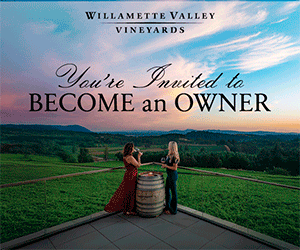Buzz about Bees
Learn the importance of pollinators
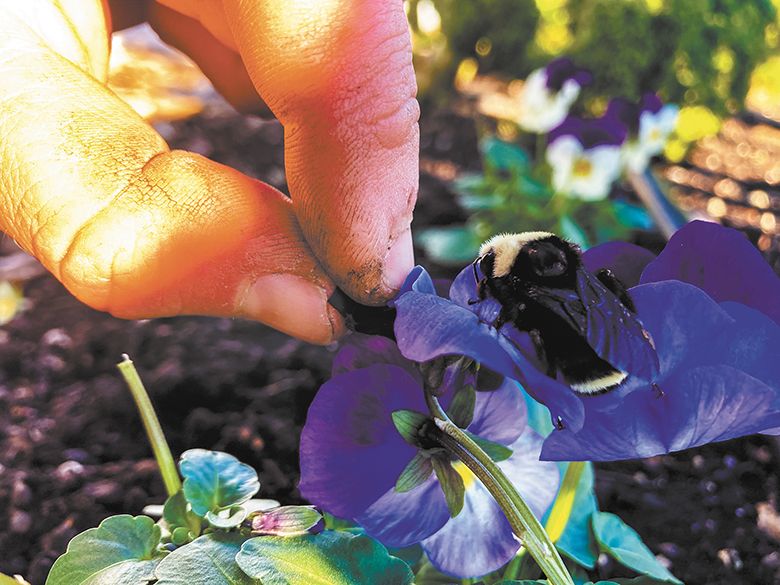
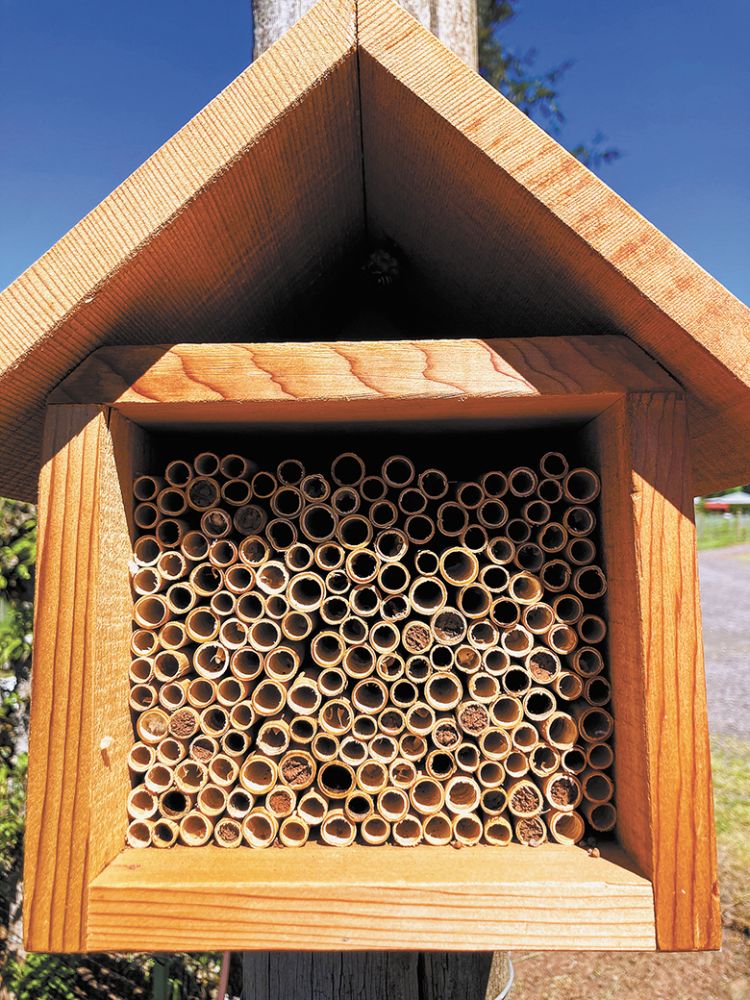
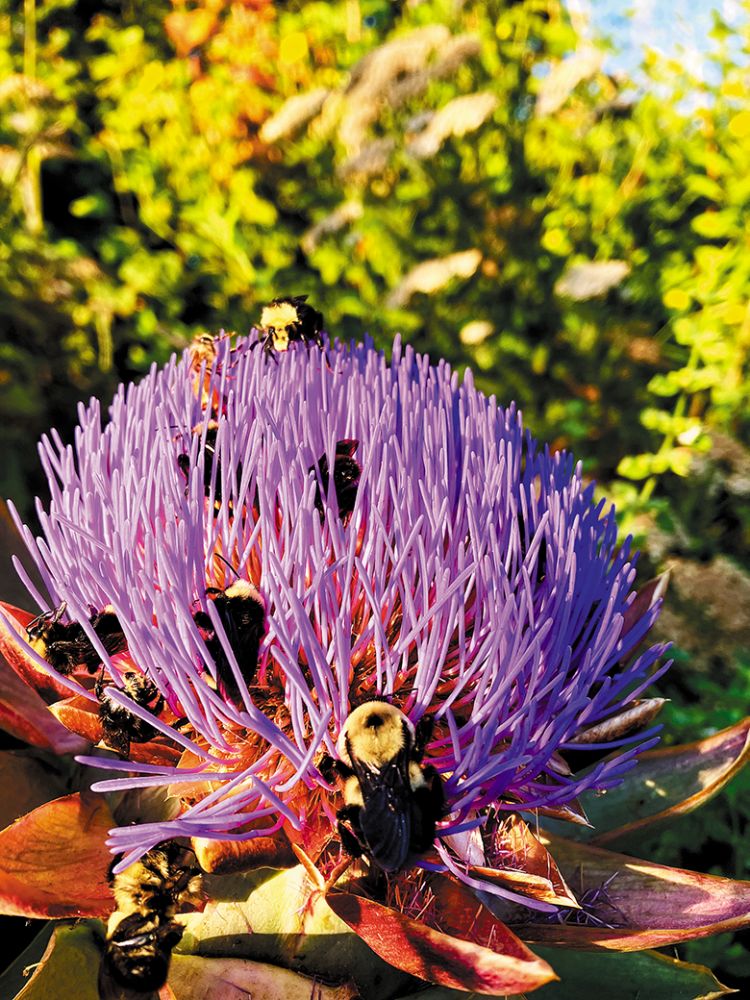
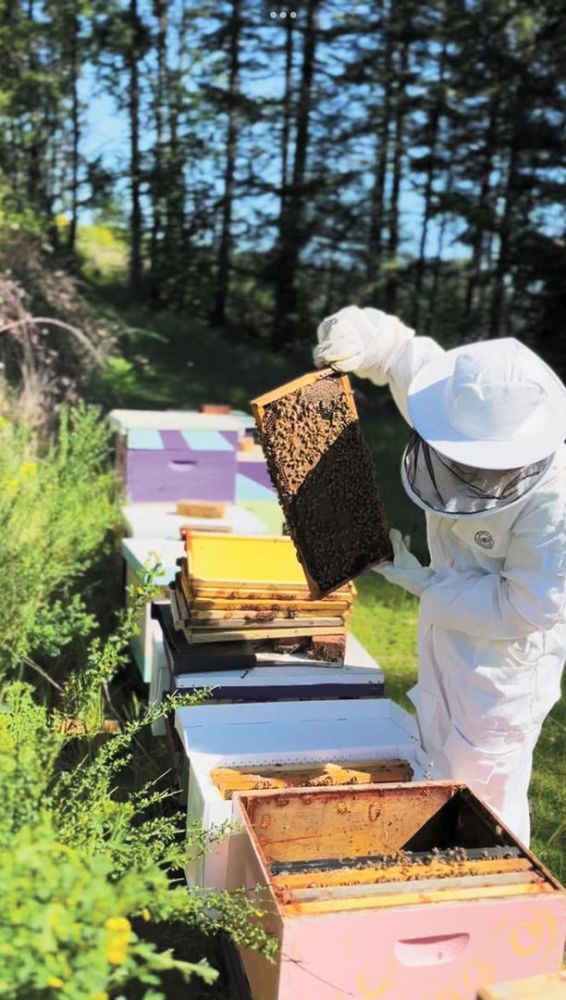
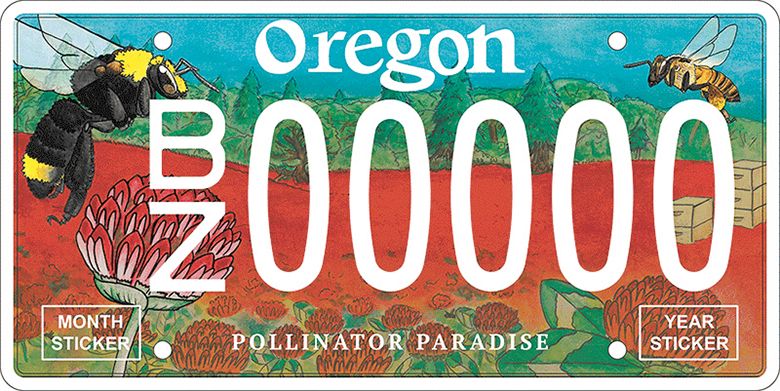
By Tamara Turner
When picturing thriving vineyards, bees might not initially come to mind. After all, grapevines are self-pollinating, with both male and female reproductive parts, and therefore don’t rely on bees to bear fruit. Yet, vineyard owners recognize the importance of this formerly unsung guest, and turn their attention to attracting both native and non-native bees.
Hive Minds
Oregon wineries, including Beckham Estate, Brooks Wine, Montinore Estate, Remy Wines, along with many others, are also beekeepers.
Wanting honey from their property, Andrew and Annedria Beckham of Beckham Estate established honey beehives over a decade ago. “Like wine, honey is also about terroir and a sense of place,” says owner and winemaker Andrew Beckham. “When guests bring home something from a vineyard they’ve visited, it strengthens their connection to that place.” According to Taylor Rebora, Beckham’s associate winemaker, “The taste of the honey really varies depending on from where the bees are getting pollen; the crimson clover produces more floral flavor and aromas, whereas the surrounding forestland creates a deeper, darker, richer honey.”
The winery also keeps Mason bees, native to North America. They fly farther than honey bees and are active for a shorter period. Their fuzzy bodies make them highly effective pollinators, fertilizing 95 percent of the plants they visit. According to BestBees.com, six Mason bees can pollinate one fruit tree, compared to 10,000 honey bees. “Mason bees are more solitary, preferring holes or bee houses filled with reeds, rather than residing in colonies,” says Rebora. “Every female Mason bee is actually a queen, and they’re extremely productive at laying eggs. Over just two months, they will fill the reeds full with eggs and protective layers of mud.”
Shannon Mayhew, stewardship coordinator at Brooks Wine, tends three hives of honey bees on the estate property. However, she is most passionate about natives, which don’t nest in large colonies. She has created several intricate garden spaces creating a diverse habitat for native bees as well as food for their hives.
“At my home farm, we grow vegetables and have 25-30 fruit trees,” says Montinore partner Rudy Marchesi. “When we added honey bee hives, it was amazing how much more productive the whole farm became. It makes you realize just how important pollinators are.”
Healthy Bees, Healthy Vines
Beyond beekeeping, some vignerons take a more holistic approach to farming. Focusing on regenerative agriculture techniques, such as no-till and cover crops, they’re establishing more comprehensive ecosystems to generate healthier soil, leading to better-quality grapes.
But what does that have to do with bees?
Cover crops, like crimson clover and cereal rye, act as pollinator habitats where bees play a starring role. They pollinate the flowers, encouraging fertilization, ultimately generating more seeds, and thus, forming additional cover crops.
The benefits are far-reaching. “Grapevines require nitrogen, depleting it from the soil,” says Marchesi. “So, from a vine-centric point of view, we plant cover crops as a means to return nutrients to the soil. Legumes, like clover, actually add nitrogen, creating a robust and balanced vineyard while also providing nectar from the flowers for the insect population.” Montinore selects plants that support their honey bees as well as native pollinators. “By establishing pollen-producing plants, we’re supporting a large population of insects,’” he explains.
Brooks Wine has designed extensive gardens on their property because they, too, believe a wider variety of insects is important. “Garden spaces aren’t just about the bees, they’re about the entire ecosystem working together to provide resiliency,” states Mayhew. “For example, the community of insects works as a source of pest control management, eliminating the need for chemical sprays.”
As Beckham Estate adopts more regenerative agricultural practices, creating pollinator gardens to attract native bees as well as provide food for their honey bee hives has become a higher priority. The cover crops, native wildflowers and a couple hundred cider apple trees increase biodiversity, all beneficial for bees, the environment and, ultimately, their grape crops.
Oregon Says “Bee Committed”
In response to a series of catastrophic incidents decimating honey and native bee populations, organizations are working to prioritize them. As early as 2006, scientists observed declines in honey bee colonies, now known as Colony Collapse Disorder. In 2014, after a significant decline in native bees, the Oregon Bee Atlas was formed. In this pioneering program, over 200 local farmers and scientists collaborated to identify all bee species in Oregon and prevent future die-offs.
Wineries, with their abundance of land, resources and captive audiences, are prime places for bee outreach and education. The Oregon Bee Project started with six Willamette Valley vineyards in 2022. Today, it has grown to over two dozen wineries, all working together to enhance pollinator habitats for more than 700 identified species of bees. Committed to supporting biodiversity, this unique group of viticulturists, nonprofits and scientists intent to make Oregon wines the most bee-friendly in the world.
Low Input Viticulture & Enology, commonly known as LIVE, is a nonprofit supporting environmentally and socially responsible winegrowing in the Pacific Northwest. In 2022, the organization announced a new effort with the Pollinator Partnership’s Bee Friendly Farming program for dual certification that protects pollinators.
For Montinore Estate, their goal is simply to become better stewards of the land. In 2023, they partnered with Oregon State University and Buzz Cover Crop Seeds (who generously donated seeds). Montinore removed a whole section of vines affected by phylloxera, replacing it with a variety of bee-friendly plants to study which seeds and flowers create the best pollinator habitats.
With the iNaturalist app, anyone can identify existing bees and plants and get recommendations to attract different types of bees. “This information helps us quantify our efforts and be selective with our plantings,” says Montinore’s head of viticulture Clay Wesson. “In terms of biodynamics and biodiversity, we’re striving to push progress and create working models of success,” says Wesson. “We do things we feel good about, but also want to measure our impact.”
Already cultivating native plants, tending beehives and practicing no-till farming, Remy Wines was awarded a Native Wildflower Seed Grant last year from the Pollinator Partnership. The grant will enhance the existing pollinator habitat and contribute to the conservation of native wildflowers. The winery will receive a selection of native seeds intended to preserve honey bee populations, aiding in the nonprofit’s goal of developing 26,000 acres of pollinator habitat by 2025.
Brooks Wine also received grants from the Xerces Society for invertebrate conservation. The winery used the funds to plant two hedgerows next to their vineyard, bridging the gap between the vines and gardens. Once the hedgerows are established, they will become habitat corridors for bees, birds and insects along the edge of the vineyard. Brooks also offers gardening classes and tours, and shares seeds from their gardens with wine club members and visitors. Through extensive outreach, Brooks trades ideas and knowledge with their neighbors, who create habitats farther down the hill. They hope to see contiguous bee, bird, insect and invertebrate corridors throughout the Valley.
What Can You Do?
Mayhew advises leaving everything in your garden at the end of the growing season. “Let your garden be a winter mess,” she says. “The birds love seeds from the flowering plants and leaves provide shelter to critters and invertebrates. It may not be aesthetically pleasing, but beyond providing winter food and shelter, it adds nutrients back into the soil.”
Become a Bee Steward. The Oregon Bee Project is working with the Oregon Bee Atlas. By identifying what you already have in your yard or garden, the organization can offer recommendations to attract a wider diversity of bees. Visit extension.oregonstate.edu/bee-steward to learn more.
Attend the Bee Friendly Wine Tours and discover how to attract bees to your garden. Some of your favorite wineries are hosting events focused on four core skills: Beekeeping, Bee Biodiversity, Planting for Bees and Mason Bees. Attend events in all four categories and earn an Oregon Bee Stewardship ballcap, all while sipping some of the Willamette Valley’s finest wines. See all event listings at oregonbeeproject.org/winetour.
Consider buying Oregon’s new license plate, Pollinator Paradise, featuring a honey bee and iconic, wild yellow-faced bumble bee, to help fund Oregon State University’s ongoing bee research.



